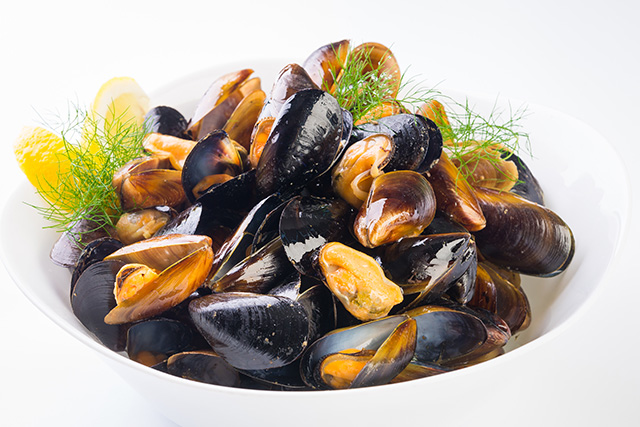How about plastic for dinner? It is showing up in mussels from the Arctic to China, and ending up on our plates
01/03/2018 / By Zoey Sky

While some moules et frites (mussels and fries) sounds delicious, the dish probably wouldn’t be as appetizing if every other bite had plastic in it. According to a recent study, mussels from the European Arctic to China are contaminated with “tiny bits of plastic.”
Mussels in Arctic waters contain the most plastic of all specimens tested along the Norwegian coast, according to the researchers. This alarming discovery emphasizes that ocean pollution is spreading globally, and may even end up on our dinner plates.
A study by a group of researchers from the Norwegian Institute for Water Research (NIVA) determined the presence of plastic in mussels in Arctic waters. Amy Lusher, one of the researchers who took part in the study, shared that plastics could have reached the north via ocean currents and winds from Europe and America. The plastic then ends up “swirling around the Arctic Ocean.”
Lusher added that “microplastics” were found in all the mussels that were studied. Earlier surveys confirmed the presence of microplastics in nations such as China, Chile, Canada, the U.K., and Belgium. In Norway, the mollusks often contained at least 1.8 bits of microplastic, or anything smaller than five millimeters (mm) long (0.2 inches), with 4.3 in the Arctic.
In 2016, Chinese researchers cautioned that mussels might be a global “bioindicator of microplastic pollution” since mollusks thrive on the seabed. Seabeds are often full of plastics and, unlike fish, mollusks stay in the same place.
It remains to be seen how microplastics can affect marine life and how the consumption of the material can affect humans. Scientists believe that to be at risk, a huge amount of shellfish must be eaten. Belgian diets for instance, often include a lot of moules et frites, which is a favorite dish in the region.
Professor Richard Thompson, an expert on microplastics at Plymouth University, warned that this update means we must put more effort into “reducing the input of plastic to the ocean… It’s a cause for concern at the moment rather than an alarm story for human consumption.” (Related: 12 Easy Ways to Reduce Plastic Usage.)
Last December 2017, at least 200 nations signed a UN resolution to eliminate plastic pollution in the seas, such as bottles, supermarket bags and food packaging, which totals at least eight million tons a year.
Professor Thompson’s research also determined that extremely high levels of plastic on the seabed can endanger animals like lugworms that live there, since such materials can build up in their tissues.
However, most plastic will simply pass through the guts of creatures like shellfish. The professor noted that human exposure to microplastics in seafood is likely to be below that from everyday plastics such as toys.
Scientists are looking into whether microplastics can cause mussels or oysters to make pearls, which nature forms as a safety precaution against “natural irritants like sand.” Lusher adds that while pearls could jack up the price of some shellfish, they can injure some unwitting diners.
Tips to minimize plastic usage
If you wish to cut down on the plastic waste that you produce, please read the tips listed below:
- Avoid using plastic straws and get a reusable stainless steel or glass straw instead.
- Always bring a reusable produce bag.
- Stop chewing gum. Made of a synthetic rubber, chewing gum is also a kind of plastic.
- Try to reuse containers for storing leftovers or shopping in bulk.
- Use a reusable bottle or mug for your beverages, even when ordering from a to-go shop.
- Use matches instead of disposable plastic lighters. You can also invest in a refillable metal lighter.
- Don’t use plasticware at home. Ask restaurants not to include them in your take-out box.
Read more articles on how to minimize pollution at Pollution.news.
Sources include:
Tagged Under: Artic waters, Ecology, environ, marine ecosystem, marine life, microplastics, Mussels, NIVA, Norwegian coast, Norwegian Institute for Water Research, Plastic, shellfish




















